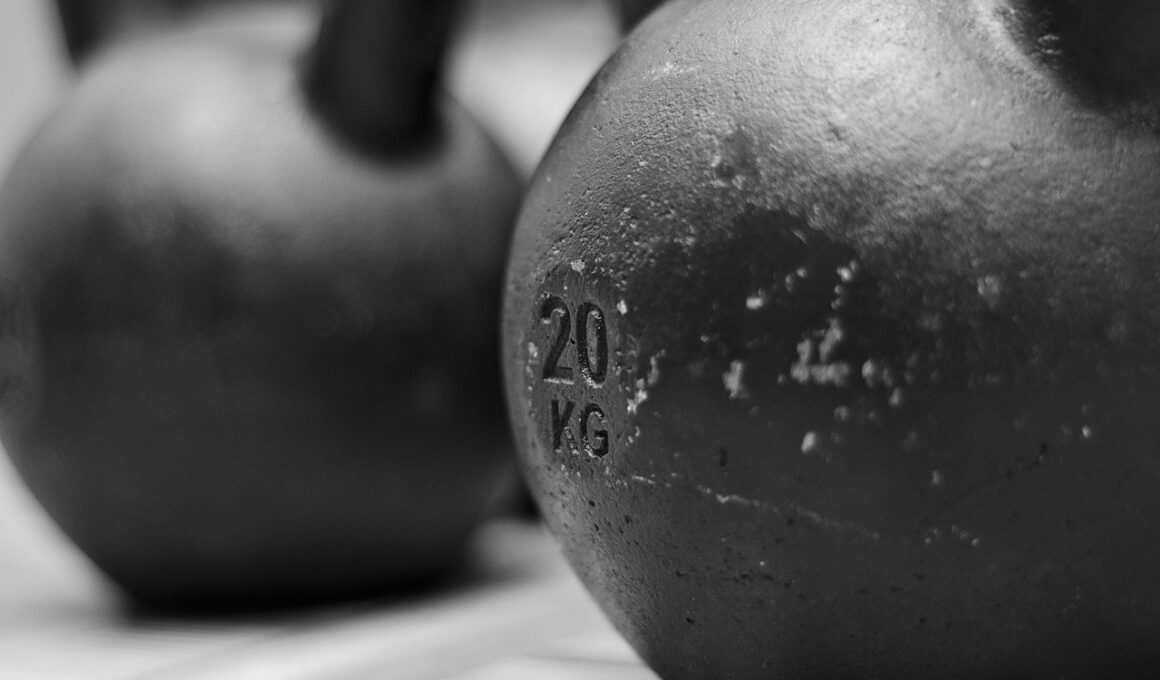How to Choose the Right Kettlebell Weight for Home Workouts
Choosing the right kettlebell weight is essential for maximizing the effectiveness of your home workout. Your strength level and fitness goals should guide your decision. Beginners should consider starting lighter, typically between 8kg to 12kg, to master form and technique. Assess your current strength with exercises like squats, kettlebell swings, and presses. For beginners, lighter weights reduce injury risk while building foundational strength. Assessing your goals, whether for strength training or endurance, will further inform your choice. Intermediate lifters may opt for kettlebells weighing between 12kg to 16kg, allowing for a broader range of exercises. If your focus is muscle building, heavier kettlebells can be beneficial. Experienced lifters can consider weights from 16kg to 24kg or more to challenge their limits effectively. However, it is crucial not to rush into heavier weights. Mastery of form is key to prevent injuries. Online resources and local gym trainers can provide additional guidance on selecting kettlebell weights, ensuring your at-home workouts are both safe and effective. An efficient workout routine leads to long-term results and satisfaction.
Understanding Your Strength Level
Understanding your current strength level is paramount when selecting the appropriate kettlebell weight. It sets the foundation for your home kettlebell workouts. Assess your fitness level realistically, considering previous training experience. If you’re new to weight training, starting with a lighter kettlebell is advisable. Gradually, you can increase weights as you become more confident and proficient in your exercises. A common guideline for most beginners is to start with a kettlebell around 8kg to 12kg. This range allows new users to learn proper technique without overwhelming themselves. As muscle strength and endurance improve, you can shift to heavier kettlebells for progressive overload, which is essential for muscle growth. Also, consider your training goals when selecting your weight. If you’re training for fat loss, maintaining higher reps with lower weights is effective. Alternatively, for muscle gain, heavier kettlebells with lower repetitions might be more suitable. Keeping a workout log can help track your progress and adapt your weights appropriately. Regular assessments will ensure you are consistently challenging yourself as you advance in your fitness journey.
Selecting the Right Kettlebell for Different Exercises
Different kettlebell exercises may require varying weights, depending on their complexity and your strength. For example, swings typically allow for a heavier kettlebell, while single-arm rows might require a lighter one due to stability concerns. Start with a kettlebell you feel comfortable with and gradually increase the weight as you gain confidence. A common suggestion is to use a lighter kettlebell for overhead movements like presses, as shoulder stability is crucial for safety. Conversely, exercises like goblet squats can usually be performed with heavier weights. The anatomy of your workouts matters. Form and control are paramount and using weights that feel manageable ensures these are prioritized. Additionally, consider the structure of your routine. If your workout involves several reps, opting for lighter weights may prevent fatigue prematurely. Conversely, if isolating muscle groups with fewer reps, heavier kettlebells may enhance strength gains. Also, remember that kettlebells can vary between brands, so don’t rely solely on the weight noted. Always test it before committing. Adjusting your selections can optimize your outcome and enhance your home workout experiences positively.
Your comfort and safety are always the most important factors when choosing kettlebell weights. Proper grip and handling minimize the risk of injury during exercises. If a kettlebell feels cumbersome or challenging to control, it may be too heavy. Focus on ensuring a full range of motion with your movements. If the weight makes any exercise feel limited or awkward, consider dropping down to a lighter kettlebell. It’s also essential to account for muscle fatigue during your workouts. You should feel challenged but not overexerted. A weight allowing you to perform multiple sets while maintaining good technique is ideal. Incorporating warm-ups and cool-downs into your routine lets your body adjust, making higher weights more approachable. Flexibility in your choice also enhances your resilience in fitness progression. Additionally, recognizing when your body needs a break is vital. Fatigue can lead to improper form and increase the risk of injury. Adjusting your weights or incorporating lighter kettlebell sessions into your routine can maintain a balance. Sustainability is key for the long haul, determining the success of your home workouts.
Utilizing Kettlebell Weight Progression
Progression in kettlebell workouts is fundamental for continued advancement. A systematic increase in weight helps avoid plateaus. Once you feel confident and comfortable with your current kettlebell weight, consider increasing gradually, typically by about 1kg to 2kg. This approach keeps you consistently challenged and engaged in your routine. When introducing heavier weights, begin with fewer reps to gauge your strength. This ensures your muscles can adapt without risking injury. Pair weight increases with adjustments in your rep ranges and rest periods to keep your workouts impactful. Also, consider varying your routine; this can enhance not only your strength but also your motivation. Adding new exercises requires assessing kettle weight to prevent overexertion. Diversification promotes balanced muscle development and minimizes overuse injuries. Ensure to keep a record of your workouts, noting your weights and repetitions for future reference. Tracking enables you to plan your ideal rotations, optimizing sessions effectively. Regular adjustments promote continuous muscle adaptation and growth, fostering a positive training environment. Look for signs of progress like increased stamina or strength in various exercises as encouraging markers of your hard work.
Don’t overlook the psychological aspect of choosing kettlebell weights. Your mindset can significantly influence your workout quality. Selecting an appropriate weight can bolster your confidence while minimizing the discomfort associated with challenging exercises. If you feel good about your choices, you are more likely to stay committed to your workouts. Building a positive association with your kettlebell routine enhances the likelihood of retention and consistency in your fitness journey. Also, consider the motivational influence of workout partners or communities. They can provide support and reassurance as you navigate through your home kettlebell workouts. Engaging with online communities can further enrich your experience, offering shared tips and success stories to inspire progress. Watching online tutorials or demonstrations by professionals also aids in building confidence. Always remember, fitness is a personal journey, and making decisions that resonate with your objectives is crucial. Following your instincts as you choose weights ensures a more enjoyable and fulfilling experience. Celebrate your milestones, regardless of their scale, as they signify progress and dedication.
Conclusion: Your Personalized Kettlebell Journey
Ultimately, selecting the right kettlebell weight is a unique journey reflecting your preferences and fitness aspirations. It’s important to prioritize your form and comfort at every stage. Regular assessments and progress checks foster a sustainable kettlebell regimen at home. Always revert to lighter weights if you notice a dip in form or control. This adaptability will prevent injuries while keeping your fitness enjoyable. Knowledge, planning, and incremental progression are essential for crafting an effective workout strategy. Seek advice from platforms and professional trainers for tailored options which suit your unique needs. Additionally, being mindful of how different kettlebell exercises impact weight selection helps maintain flexibility in your workouts. Embrace this personalized approach, allowing your kettlebell training to evolve as you do. Celebrate small wins and be patient. As you grow stronger and more confident, you can gradually incorporate heavier weights into your routine. Initiating your kettlebell journey involves listening to your body and adjusting weights in response. In doing so, you create a fun, effective workout space that continues to motivate you in your health and fitness endeavors.


